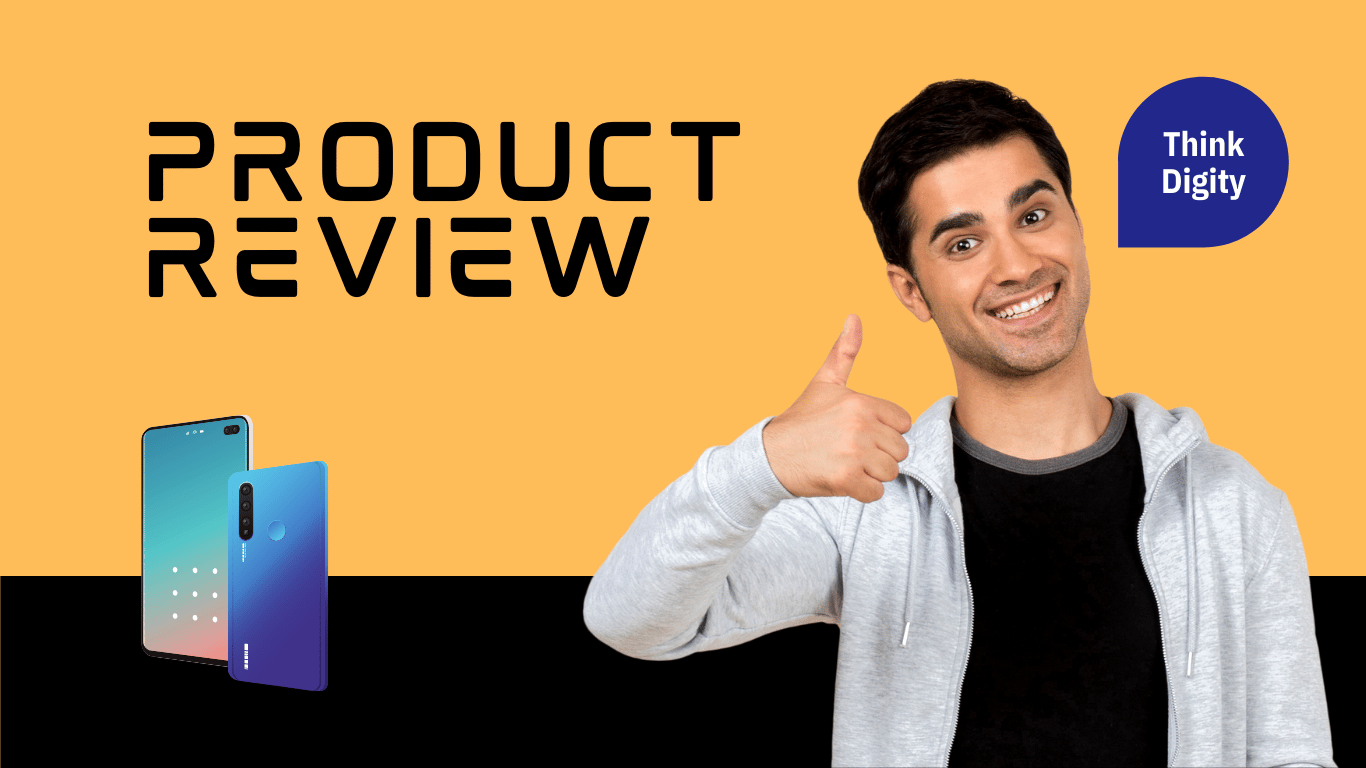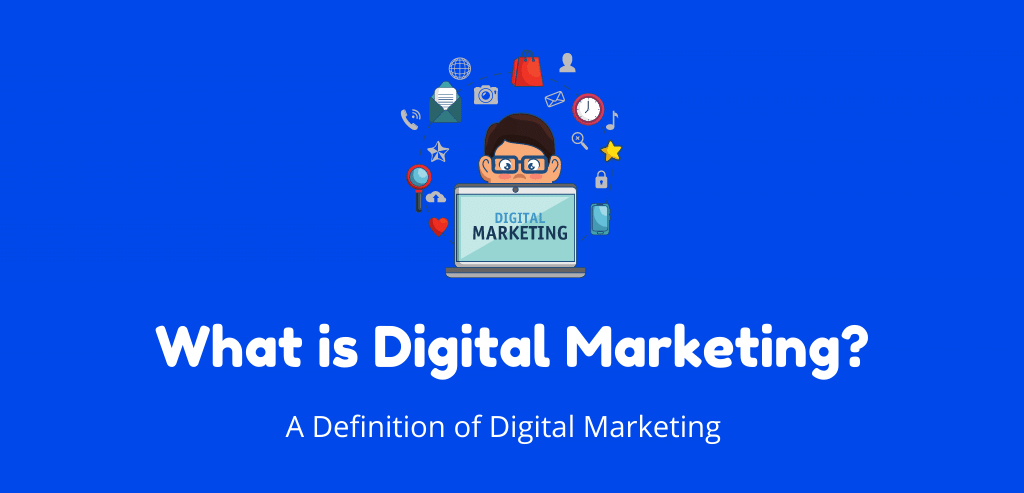
Digital marketing refers to advertising delivered through digital channels such as search engines, websites, social media, email, and mobile apps. Companies support goods, services, and brands through digital marketing with these online media channels.
Consumers rely heavily on digital means to research products. For example, Think with Google Marketing Insights found that 48% of consumers start their queries on search engines, while 33% search branded websites and 26% search in mobile applications.
What is Digital Marketing?
Digital marketing refers to marketing using electronic devices or media. Digital marketing is a broader term for any electronically delivered advertising. When people hear and talk about digital marketing, most think about different internet media types.
For example, email, social media, websites, even search engines.
Everything that connects to the internet via smartphones, tablets, laptops, desktops, etc.
While modern digital marketing is a vast channel system that marketers need to embed their brands, online advertising is far more complex than the media alone. Therefore, to unlock the true potential of digital marketing, marketers need to delve deep into today’s vast and complex cross-channel world to discover strategies that make an impact through engagement marketing.
Engagement Marketing is how to use the data you collect over time to build meaningful interactions with prospects and repeat customers. Engaging customers in a digital landscape make brand awareness, acts as the industry thought leader, and puts your company at the forefront when the customer is ready to buy.
The future of digital marketing expects to continue to expand in the variety of portable devices available to consumers. Forbes also predicts that social media will increasingly lead to conversations in the B2B space. In addition, video content is refined for search engine optimization (SEO) purposes, and email marketing is becoming even more personalized.
Components of Digital Marketing
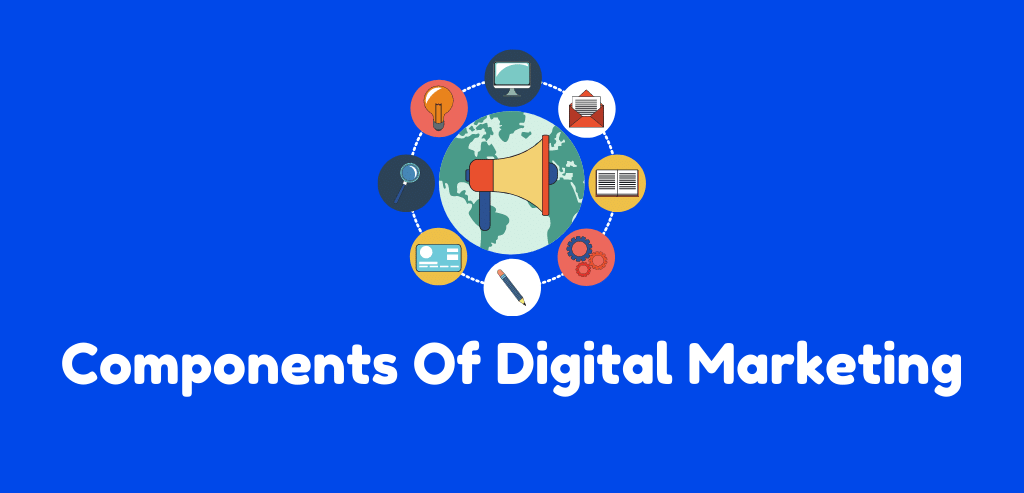
Digital marketing encompasses a vast network of digital touchpoints that customers interact with several times a day. To properly use these channels, you need to understand each channel.
Paid search:
Paid search or pay-per-click advertising (PPC) usually leads to the sponsored result at the top or side of a search engine results page (SERP). These ads charge you for each click and can be customized to appear when specific search terms enter so that your ads target audiences looking for something specific.
Also, ads can be highly effective as they are based on data gathered from people’s online behavior and are used to increase website traffic by serving relevant ads to the right people at the right time. These ads also include retargeting. Marketing automation tools can create unique, personal cross-platform ads based on customer actions.
Search engine optimization (SEO):
SEO is the process of optimizing the content, technical setup, and reach of your website so that your pages appear at the top of a search engine result for a specific set of keyword terms. Using SEO can drive visitors to your website if they display behavior that implies looking for relevant products. In addition, it can change the fundamental when considering that 90% of searchers have not yet formed an opinion on a brand (Status Labs, 2018).
While PPC and retargeting have their place, the organic online traffic generated through search engine optimization significantly impacts search rankings and organic website traffic.
You can use SEO to increase visibility and build lasting customer relationships using keywords and phrases. SEO improves a website’s rank in online search results and organic website traffic by using popular keywords and phrases. Robust SEO strategies significantly impact digital marketing campaigns as visibility is the first step to lasting customer relationships.
Content marketing:
Effective content marketing is not outwardly promotional but serves to educate and inspire consumers looking for information.
Delivering content relevant to your audience can secure you as a thought leader and trusted source of information, so your other marketing efforts are less likely to get lost in the static.
In the age of the self-directed buyer, content marketing receives three times more leads than paid search advertising. So the extra effort is worth it.
Social media marketing:
The key to effective social media marketing goes way beyond having active social media accounts. You also need to incorporate social elements into every aspect of your marketing efforts to create as many peer-to-peer sharing opportunities as possible.
The more inspired your audience is to engage with your content. The more likely they share it, the more their employees can become customers.
Email marketing:
After more than two decades, email is still the fastest and most direct way to reach customers with important information.
Today’s successful email campaigns must be incredibly engaging, relevant, informative, and entertaining, so they don’t get buried in your customer’s inbox. In addition, your marketing emails should meet five core attributes. They need to be trustworthy, relevant, talkative, cross-channel, and strategically coordinated.
Mobile marketing:
Mobile devices keep in our pockets, sit next to our beds, and constantly check throughout the day. That does marketing on mobile devices critical – two-thirds of consumers can remember a particular brand they advertised on mobile in the past week – but mobile devices are also very nuanced given their intimacy.
SMS, MMS, and in-app marketing are options to reach your customers on their devices. Additionally, it would help if you considered coordinating your marketing efforts across your other digital marketing channels.
Marketing automation:
Marketing automation is an integral platform that connects all of your digital marketing. For example, companies that automate lead management have seen revenue grow 10% or more in six to nine months. Without them, your campaigns will look like an unfinished puzzle with a crucial piece missing.
Marketing automation software streamlines and automates marketing tasks and workflows, measures results, and calculates your digital campaigns’ return on investment (ROI) to grow sales faster. Marketing automation can provide valuable information about which programs are working and which are not. In addition, it provides metrics that you can use to talk about your company’s digital marketing efforts.
Does digital marketing work for all businesses?
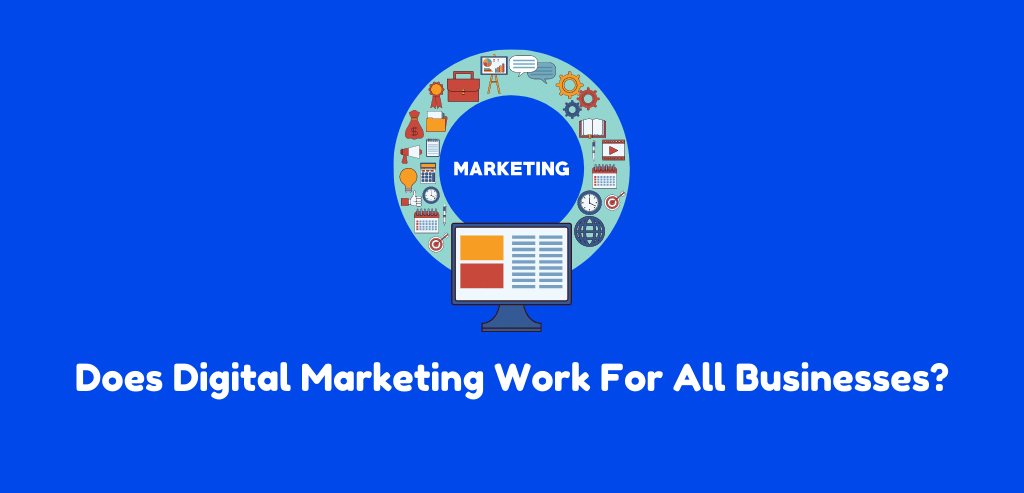
Digital marketing can work for any business in any industry. However, regardless of your business selling, digital marketing still involves creating buyer personalities to identify your audience’s needs and create valuable content online.
However, this does not mean that all companies should implement a digital marketing strategy the same way.
B2B Digital Marketing
Your digital marketing efforts will likely focus on generating leads online if your company is a business-to-business (B2B) company. The end goal is for someone to speak to a salesperson. Because of this, your marketing strategy is to use your website to attract and convert the highest quality leads for your sales reps and support digital channels.
Beyond your website, you will likely choose to focus your efforts on business-centric channels like LinkedIn, where you’re demographic spend their time online.
B2C Digital Marketing
Suppose your company is a business-to-consumer (B2C) company, depending on the price of your products. In that case, the goal of your digital marketing efforts is to get people to your website and turn them into customers without ever having to speak to a salesperson.
Because of this, you are likely to focus less on “leads” in the traditional sense than on building an accelerated buyer journey from the moment someone lands on your website to the moment they make a purchase. It often means that your product features are higher up the marketing funnel in your content than they would be for a B2B company and that you may need to use stronger calls-to-action (CTAs).
For B2C companies, channels like Instagram and Pinterest are often more valuable than business-oriented platforms LinkedIn.
Why is digital marketing important?
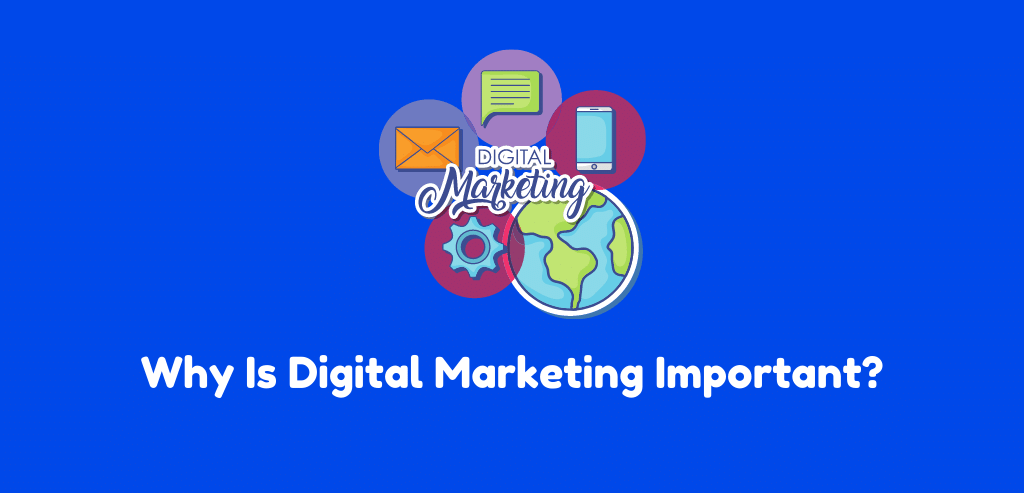
With digital marketing, you can reach larger audiences than traditional methods and target the potential customers who are most likely to buy your product or service.
In addition, it is often less expensive than traditional advertising and allows you to measure success daily and rotate as you see fit.
Digital marketing offers several significant advantages. Now let’s dive into four of them.
You can only target the potential customers who are most likely to buy your product or service.
When you run an ad on TV, a magazine, or a billboard, you have limited control over who sees the ad. Of course, you can measure specific demographics – including the magazine’s typical readership or the demographics of a particular neighborhood – but it’s still essentially a shot in the dark.
With digital marketing, on the other hand, you can identify and address a particular target group and send this target group personalized, highly converting marketing messages.
For example, you can use the targeting capabilities of social media to show social media ads to a specific audience based on age, gender, location, interests, networks, or behavior. Alternatively, you can use PPC or SEO strategies to serve ads to users who have shown interest in your product or service or searched for specific keywords related to your industry.
Ultimately, digital marketing allows you to do the research necessary to identify your buyer persona and will enable you to refine your marketing strategy over time to ensure you reach potential customers who are most likely to buy. Best of all, with digital marketing, you can market to subgroups within your more extensive audience. Therefore, it is instrumental when selling multiple products or services to different buyer personalities.
It’s cheaper than traditional digital marketing methods.
With digital marketing, you can track campaigns daily and reduce the amount of money you spend on a particular channel if it doesn’t get a high ROI. The same does not apply to traditional forms of advertising. It doesn’t matter how your billboard works – it still costs the same whether or not it converts for you.
Plus, you have complete control over where you want to spend your money with digital marketing. For example, instead of paying for PPC campaigns, you might be spending money on design software to create high-converting Instagram content. In addition, a digital marketing strategy allows you to spin around to make sure you never waste money on channels that are not performing well continuously.
For example, if you work for a small business on a budget, you can try investing in social media, blogging, or SEO – three strategies that can help you get a high ROI with even minimal expenses.
With digital marketing, you can outperform prominent players in your industry.
If you work for a small business, you will likely find it difficult to compete with major brands in your industry, many of which have to invest millions of dollars in television advertising or nationwide campaigns. Fortunately, there are many ways to outperform the big players through strategic digital marketing initiatives.
For example, you can identify specific long-tail keywords related to your product or service and create high-quality content to help you rank in search engines for those keywords. Search engines don’t care which brand is the biggest. Instead, search engines prioritize content best received by the target audience.
In addition, you can use social media to reach new target groups through influencer marketing. I don’t follow big brands on social media. Instead, I follow influencers who occasionally come up with products or services that they like. If you work for a small to medium-sized company, this might be an excellent way to consider.
Digital marketing is measurable.
With digital marketing, you get a comprehensive, overall view of all the metrics that can be important to your business – including impressions, shares, views, clicks, and time on the page. That is one of the most important advantages of digital marketing. While traditional advertising can be helpful for specific goals, the most notable limitation is measurability.
Unlike most offline marketing efforts, digital marketing allows marketers to see accurate results in real-time. If you’ve ever run an ad in a newspaper, you know how difficult it is to gauge how many people came to that page and saw your ad. There’s no surefire way to tell if this ad was responsible for sales in the first place.
On the other hand, you can measure the ROI of almost any aspect of your marketing efforts with digital marketing.
Website Traffic
Digital marketing allows you to see the exact number of people who viewed your website home page in real-time using digital analytics software available on marketing platforms like HubSpot.
You can also see how many pages you visited, what device you used, and from where they came.
Based on the number of people visiting your website, you can use this information to prioritize which marketing channels you want to spend more or less time on. For example, if only 10% of your traffic is coming from organic search, you know that you will likely need to spend some time on SEO to increase that percentage.
It’s hard to tell how people using offline marketing will interact with your brand before interacting with a seller or purchasing. With digital marketing, you can identify trends and behavior patterns of people before they reach the final stages of their buyer journey. It allows you to make more informed decisions about getting them to the top of the marketing funnel on your website.
How to Do Digital Marketing?

Define your goals first thing you need to do when starting in digital marketing is to identify and define your goals, as you will design your strategy differently depending on those goals. For example, if you want to increase brand awareness, you may want to pay more attention to reaching new audiences through social media.
Alternatively, you might want to increase sales on a particular product. In this case, it is more important that you focus on SEO and optimize content to attract potential buyers to your website in the first place. Also, if sales are your goal, you can try PPC campaigns to drive traffic through paid ads.
Either way, the easiest way to develop a digital marketing strategy is after you’ve identified your company’s biggest goals.
Identify your target audience.
We mentioned this before, but one of the most important benefits of digital marketing is targeting specific audiences. However, you cannot take advantage of this if you haven’t identified your target audience first.
Of course, it’s important to note. Your target audience can vary based on the channel or target for a particular product or campaign.
You may have noticed that most of your Instagram audience is younger and prefers fun memes and quick videos – but your LinkedIn audience is more likely to be made up of seasoned professionals looking for more tactical advice. So you should vary your content to appeal to these different audiences.
If you’re starting from scratch, take a look at how to find your target audience.
Establish a budget for each digital channel
The account you set up depends on what digital marketing elements you want to add to your strategy.
If you focus on in-depth techniques like SEO, social media, and content creation for an existing website, the good news is that you don’t need a budget at all. Inbound marketing focuses on creating quality content that your audience will want to consume. If you don’t plan on outsourcing the work, the only investment you’ll need is your time.
You can start by hosting a website and creating content with HubSpot’s CMS
If you are on a tight budget, you can use WordPress hosted on the WP Engine simply by using StudioPress and building your website with no code using Elementor Website Builder for WordPress.
There are undoubtedly some costs involved in outbound techniques such as online advertising and buying email lists. What it costs depends on what type of visibility you want from the advertising.
For example, to implement PPC using Google AdWords, bid against other companies in your industry to appear in Google search results for keywords associated with your company. Depending on the keyword’s competitiveness, this can be relatively affordable or extremely expensive. So it’s a good idea to focus on building your organic reach.
Strike a good balance between paid and free digital strategies
A digital marketing strategy needs both paid and open-ended aspects to be genuinely effective.
For example, if you spend time building prominent buyer personalities to understand your target audience’s needs, focus on creating quality online content to attract and convert them. Even with minimal ad spend, you’ll likely see substantial results in the first six months.
However, results can be achieved faster when paid advertising is part of your digital strategy.
Ultimately, it recommends focusing on building your organic (or “free”) reach using content, SEO, and social media for long-term and sustainable success.
When in doubt, try both and repeat your process as you learn which paid or free channels are best for your brand.
Optimize your digital assets for mobile
Another critical component of digital marketing is mobile marketing. Smartphone use accounts for 69% of the total time spent consuming digital media in the United States. In contrast, desktop-based digital media consumption is less than half – and the US is still not the biggest fan of cellphones compared to other countries.
Therefore, optimizing your digital ads, web pages, social media images, and other digital assets for mobile devices is essential. In addition, if your company has a mobile app that allows users to engage with your brand or shop for your products, your app also falls under the umbrella of digital marketing.
Anyone who comes into contact with your company online via mobile devices must have the same positive experiences as on the desktop.
A mobile-friendly or responsive website design is implemented to make surfing user-friendly for mobile device users.
It can also mean reducing the length of your lead generation forms to create a hassle-free experience for users downloading your content on the go. When creating your social media images, it is essential to keep a mobile user in mind, as the image dimensions are smaller on mobile devices, and text can be cut off.
There are many ways you can optimize your digital marketing resources for mobile users. First, however, it is essential to consider how the experience will impact mobile devices when implementing a digital marketing strategy. By ensuring this is always a priority, you create digital experiences that work for your audience and get the results you want.
Conduct keyword research
Digital marketing is about reaching a target audience through personalized content. None of this is possible without effective keyword research.
Conducting keyword research is critical to optimizing your website and content for SEO and ensuring that people can find your business through search engines. In addition, keyword research on social media can help promote your product or service on various social channels.
Even if you don’t have a full-time SEO strategist, you still want to do keyword research. Try to list high-performing keywords related to your product or service and consider long-tail variations for additional options.
Iterate based on the analytics you measure
To develop an effective digital marketing strategy over the long term, your team needs to learn how to pivot based on analysis.
For example, after a few months, you may find that your audience is no longer interested in your content on Instagram – but they love what you create on Twitter. Sure, this could be an opportunity to review your Instagram strategy. However, it could also signify that your audience prefers a different channel to consume branded content.
Alternatively, you may find that an older website is no longer receiving the traffic it used to have. You can refresh the page or remove it altogether to ensure visitors find the most current and relevant content for their needs.
Digital marketing offers companies incredibly flexible opportunities for continued growth – but it’s up to you to take advantage of them.
Conclusion
Digital marketing is the marketing of the future. Along with each of the benefits we’ve discussed in this article, you’ll be able to track the results of your digital marketing initiatives with extraordinary precision. You can easily see which strategies will produce successful outcomes and require some work.
If this article convinced you that you need digital marketing (or need to improve your digital marketing video game), but you need help determining the suitable method, let us know below or in the notes! We want auxiliary services to grow with digital marketing.
Digital marketing must be one of the main focal points of the overall marketing strategy of almost any company. Never before has there been a way to stay in such constant touch with your customers, and nothing else deals with the level of customization that digital data can offer. The more you accept the possibilities of electronic marketing, the more you can understand your company’s development potential.




